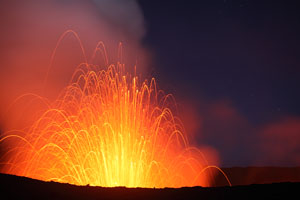
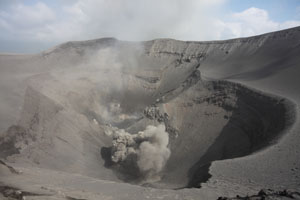
Classic strombolian eruption of Yasur Volcano
Yasur summit craters viewed from north rim
 |
 |
|
Classic strombolian eruption of Yasur Volcano |
Yasur summit craters viewed from north rim |
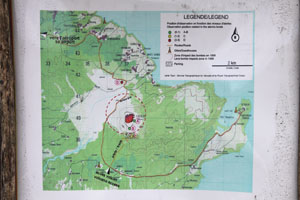 |
|
|
Map of Yasur volcano and surroundings located at car park |
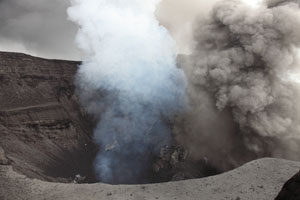 |
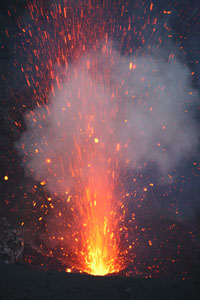 |
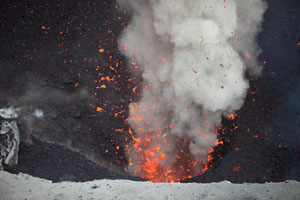 |
|
Significant degassing of S crater, ash eruption of N crater |
Strombolian eruption |
Strombolian eruption with minor ash output |
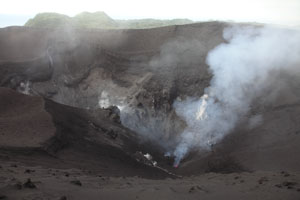 |
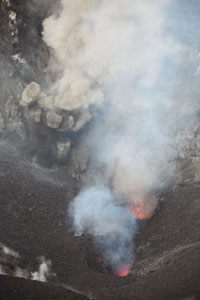 |
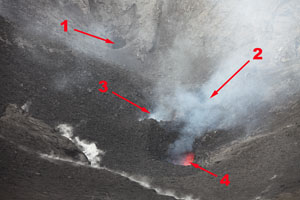 |
|
View into south crater from west rim |
Simultaneous activity at 3 vents |
Four active vents in south crater |
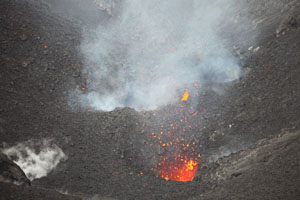 |
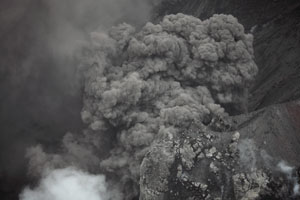 |
|
Closer view of vents 2-4 |
Ash eruption from vent "4", viewed from north rim |
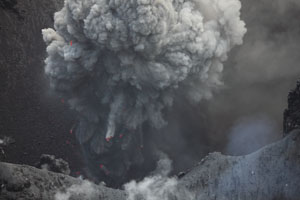 |
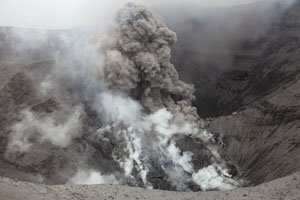 |
|
Ash eruption from vent "2" in south crater, viewed from north rim |
Ash eruption of S crater viewed across degassing N crater |
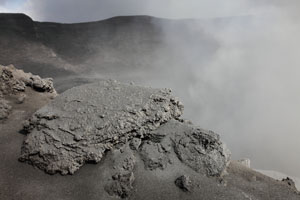 |
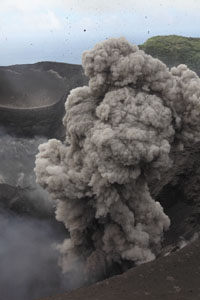 |
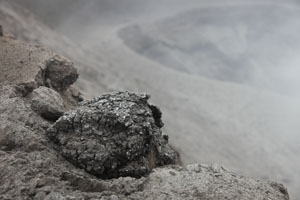 |
|
Volcanic bomb on east rim of Yasur Volcano |
Powerful ash-rich Strombolian eruption |
Volcanic bomb on east rim of Yasur Volcano |
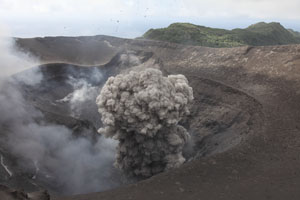 |
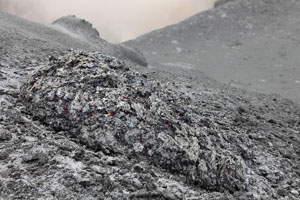 |
|
Powerful ash-rich Strombolian eruption - bombs thrown hundreds of meters over crater |
Volcanic bomb emplaced on E rim (5 m from my position) by eruption shown on left |
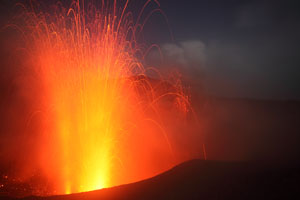 |
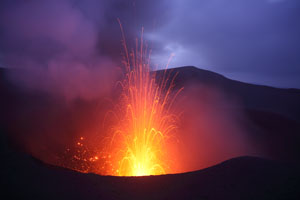 |
|
South crater powerful Strombolian activity |
South crater Strombolian activity |
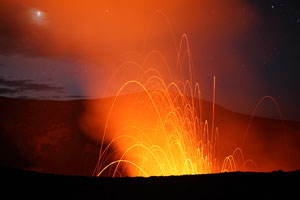 |
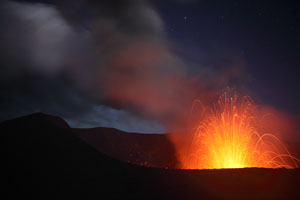 |
|
South crater Strombolian activity |
South crater Strombolian activity |
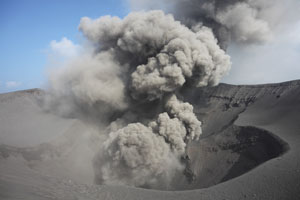 |
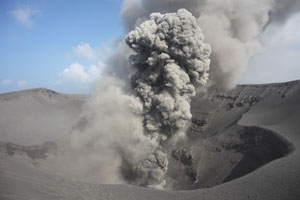 |
|
Ash clouds from northern crater |
Ash clouds from northern crater |
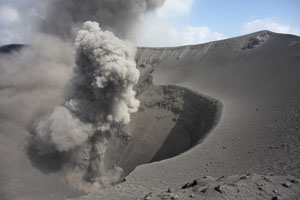 |
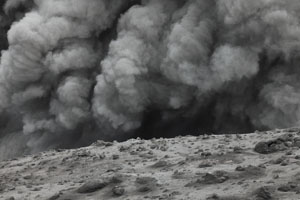 |
|
Minor ash eruption - summit of Yasur is high point at top right |
Approaching the north crater |
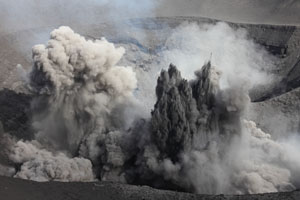 |
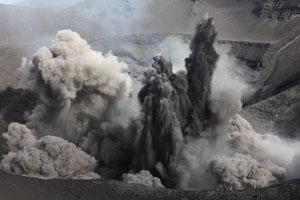 |
|
Ash clouds over northern crater |
Ash clouds over northern crater |
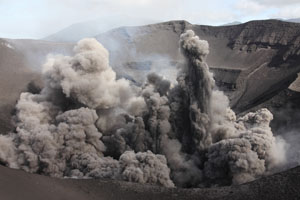 |
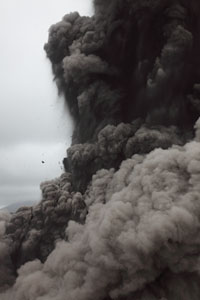 |
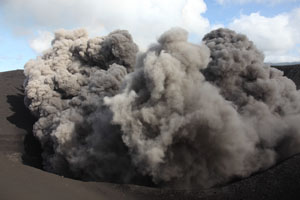 |
|
Ash clouds over northern crater |
Ash clouds over northern crater |
Ash clouds over northern crater |
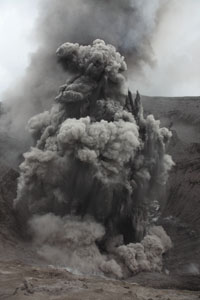 |
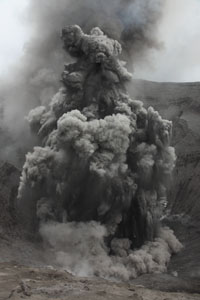 |
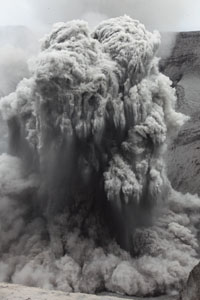 |
|
Ash clouds rising from northern crater |
Ash clouds rising from northern crater |
Ash clouds rising from northern crater |
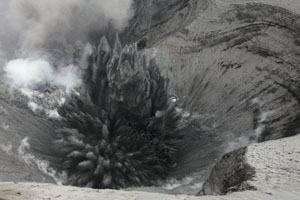 |
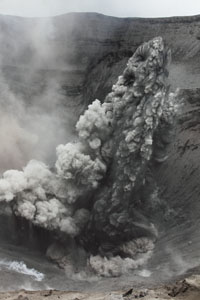 |
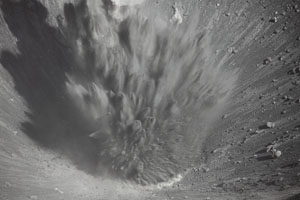 |
|
Onset of N crater powerful ash eruption |
Partially laterally directed ash cloud |
Onset of N crater powerful ash eruption |
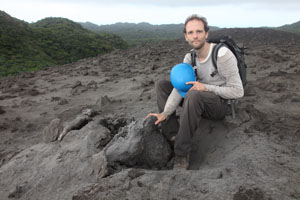 |
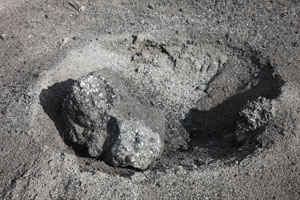 |
|
Author with recently impacted large volcanic bomb on north rim |
Recent "Dark" (non-juvenile) volcanic bomb impact crater east of north crater |
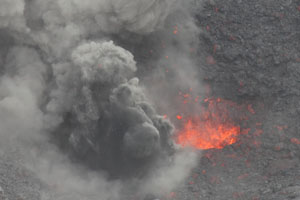 |
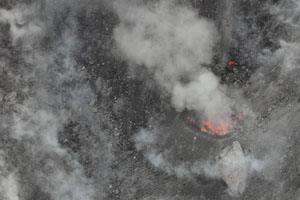 |
|
Vent on floor of N crater briefly visible on first observation day, adjacent vent ashing |
Tiny vent W of crater bottom vent(s) - seemed to lie on small fissure |
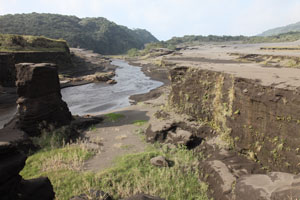 |
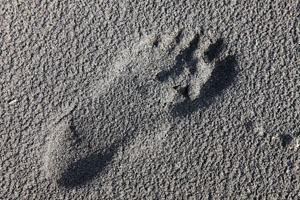 |
|
River valley deeply eroded into ash plain |
Footprint on ash plain |
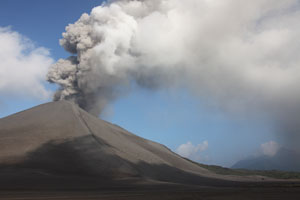 |
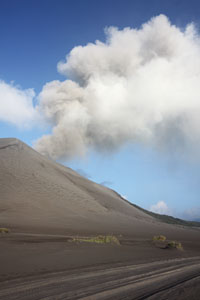 |
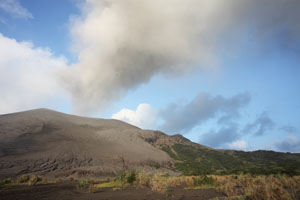 |
|
Yasur volcano viewed from ash plain |
Yasur volcano viewed from ash plain |
View from west, note vegetated south flank |
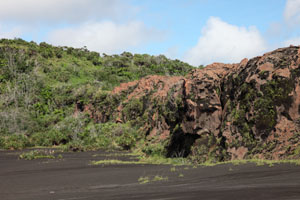 |
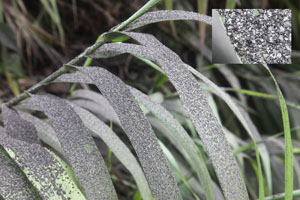 |
|
Deposit of reddish rocks east of summit craters |
Ash on leaves (Inset shows exceptionally high crystallinity) |
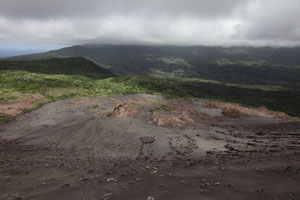 |
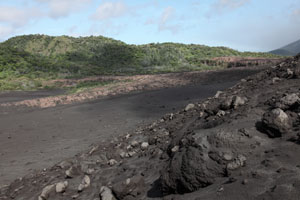 |
|
View SE from south crater |
Looking south from NE rim - Note red rock formations |
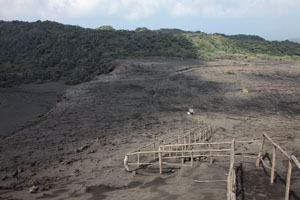 |
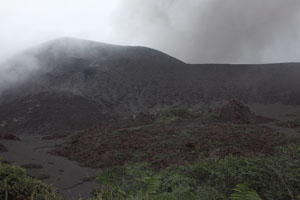 |
|
Red rock plateau E of craters (location of car park) |
Yasur crater complex viewed from east |
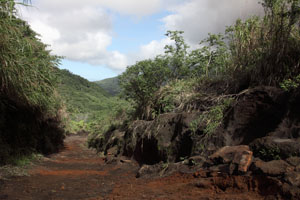 |
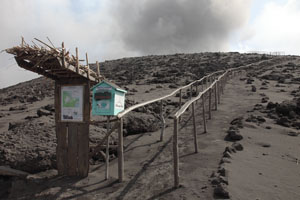 |
|
Dirt road leading up to the summit region |
Post box at foot of walkway from car park to main viewpoint |
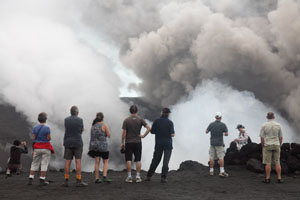 |
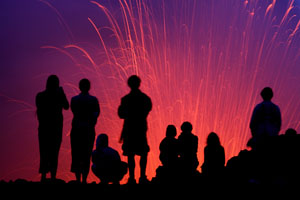 |
|
Tourists watching eruptions at Yasur volcano |
Tourists watching eruptions after nightfall |